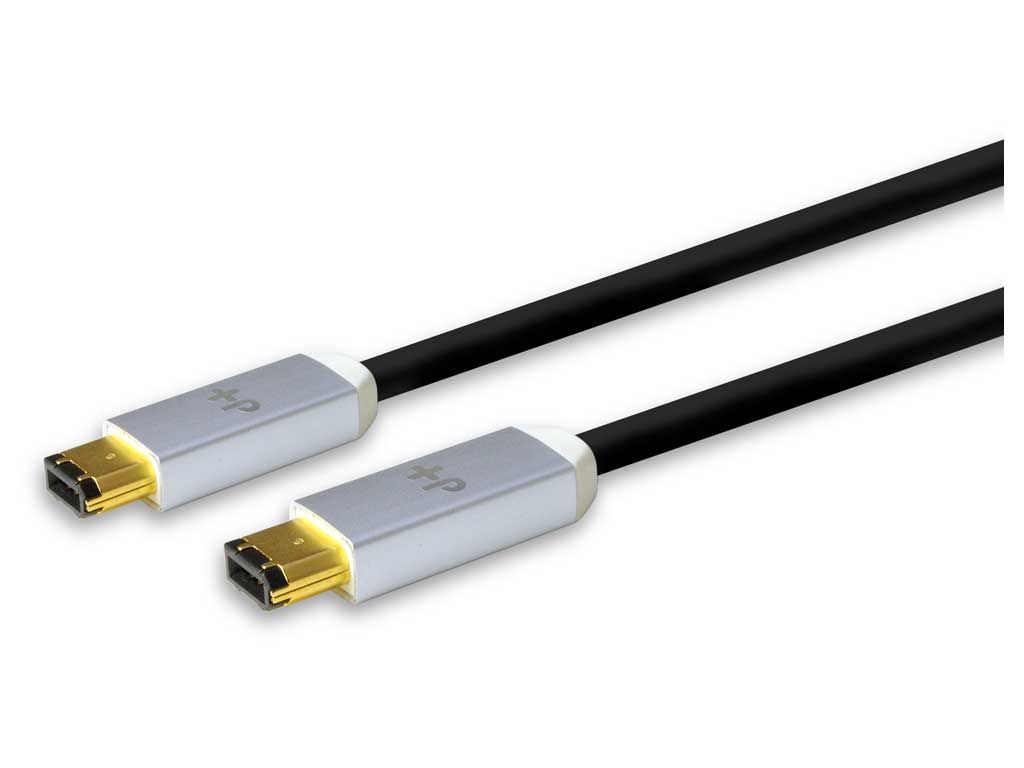
Are you curious about the intricacies of Firewire connectors and their pin configurations? If so, you've come to the right place. Understanding the number of pins on a Firewire connector is crucial for compatibility and connectivity. Whether you're a tech enthusiast, a professional in the field, or simply seeking to expand your knowledge, delving into the specifics of Firewire connectors can unveil a world of insight. Let's embark on a journey to unravel the mystery behind the number of pins on a Firewire connector and explore the significance of this fundamental component in the realm of technology. So, how many pins does a Firewire connector have, and what do they signify? Let's dive in to find out. Remember, the devil is in the detail!
Inside This Article
- Overview of Firewire Connector
- Pin Configuration of Firewire Connector
- Functionality of Firewire Connector Pins
- Conclusion
- FAQs
Sure, I can help with that. Here's the content for the "Overview of Firewire Connector" section:
html
Overview of Firewire Connector
The Firewire connector, also known as IEEE 1394, is a high-speed interface primarily used to connect digital devices such as camcorders, external hard drives, and audio interfaces to a computer. It was developed by Apple in the 1990s and gained popularity for its fast data transfer rates and real-time data streaming capabilities.
Unlike USB, Firewire allows for peer-to-peer device connections, making it suitable for professional audio and video applications. It comes in different versions, including Firewire 400 (IEEE 1394a) and Firewire 800 (IEEE 1394b), each offering varying data transfer speeds and compatibility.
While Firewire has been largely replaced by faster interfaces such as USB 3.0 and Thunderbolt, it still remains in use for legacy devices and specific professional applications due to its unique features and capabilities.
This content provides a brief yet comprehensive overview of the Firewire connector, including its history, functionality, and relevance in today's technology landscape.
Pin Configuration of Firewire Connector
Firewire connectors, also known as IEEE 1394 connectors, have different pin configurations based on their versions. There are two main types of Firewire connectors: the 6-pin and the 4-pin. Each has its own unique pin layout to facilitate specific functionalities.
The 6-pin Firewire connector features a pin configuration that includes two power pins, two data pins, and one ground pin. Additionally, it has a dedicated pin for transmitting and receiving signals, which allows for simultaneous data transfer and power delivery.
On the other hand, the 4-pin Firewire connector omits the two power pins found in the 6-pin version. This configuration includes one ground pin and three data pins, enabling data transfer and signal communication without the capability for power delivery.
Understanding the pin configuration of Firewire connectors is crucial for ensuring compatibility and proper functionality when connecting devices. Whether transferring data or powering devices, the pin layout plays a critical role in enabling seamless connectivity and efficient operation.
Functionality of Firewire Connector Pins
Each pin in a Firewire connector serves a specific function, contributing to the overall capability of the interface. The pins are meticulously designed to facilitate the high-speed transfer of data, making Firewire a popular choice for connecting various devices.
The pins work in tandem to enable the transmission of data, power delivery, and communication between devices. This seamless coordination ensures efficient and reliable connectivity, enhancing the user experience across a wide range of applications.
Furthermore, the functionality of the Firewire connector pins underscores their role in supporting hot-swapping, a feature that allows users to connect and disconnect devices without powering down the system. This convenience is made possible by the intelligent design and functionality of the individual pins within the Firewire connector.
Moreover, the pins play a crucial role in delivering power to connected devices, ensuring they receive the necessary electrical supply for optimal performance. This capability adds to the versatility of Firewire connectors, making them suitable for various electronic devices and peripherals.
In essence, the functionality of Firewire connector pins is integral to the seamless operation and performance of the interface, showcasing the meticulous engineering and design that underpins the functionality of each individual pin.
**
Conclusion
**
Understanding the number of pins on a Firewire connector is crucial for ensuring compatibility and optimal performance when connecting devices. With Firewire 400 featuring 6 pins and Firewire 800 offering 9 pins, it’s essential to select the appropriate cable and connector for your specific devices. As technology continues to evolve, the importance of understanding connector specifications cannot be overstated. Whether you’re working with audio interfaces, video cameras, or other Firewire-enabled devices, knowing the pin configuration is essential for seamless connectivity and data transfer. By staying informed about these technical details, you can make informed decisions when setting up your digital workspace, ultimately enhancing efficiency and productivity.
FAQs
- How many pins does a Firewire connector have?
A Firewire connector typically has either 4, 6, or 9 pins, depending on the specific version and type of Firewire interface.
- What are the different types of Firewire connectors?
The most common types of Firewire connectors are the 4-pin, 6-pin, and 9-pin connectors. Each type serves different purposes and is compatible with specific devices.
- Are Firewire connectors still used today?
While Firewire technology has been largely replaced by other interfaces such as USB and Thunderbolt, it is still used in certain professional audio and video equipment, as well as older devices that rely on Firewire connectivity.
- Can I use an adapter to convert a Firewire connector to a different interface?
Yes, there are adapters available that allow you to convert a Firewire connector to other interfaces such as USB or Thunderbolt, depending on your specific needs.
- What are the main advantages of Firewire connectors over other interfaces?
Firewire connectors are known for their high-speed data transfer, especially in the realm of audio and video production. They also support daisy-chaining, allowing multiple devices to be connected in a series.
